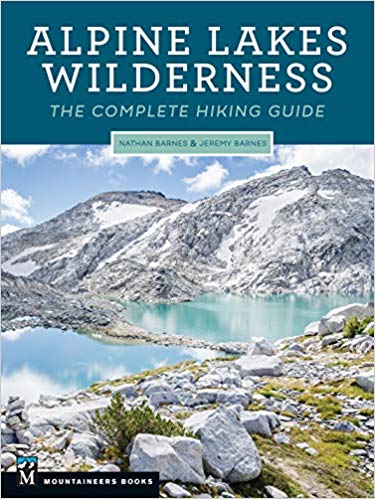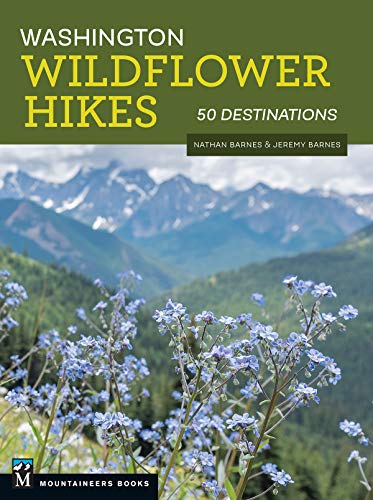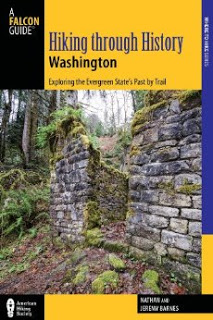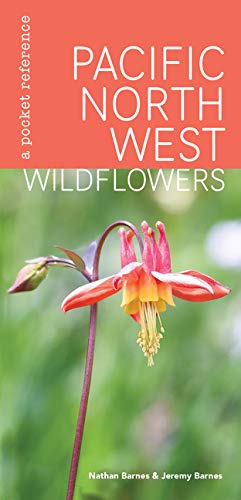Tolt River-John MacDonald Park
This tour of Tolt-MacDonald Park is a great option for stretching your legs on a rainy or wintery day.
Total Distance: 3.3 miles
Total Ascent: 400ft
Highest Point: 440ft
Total Ascent: 400ft
Highest Point: 440ft
Difficulty: Easy
Our Hiking Time: 1h 45m
Required Permit: None
Our Hiking Time: 1h 45m
Required Permit: None
To get there, take I-90 out to Exit 22, Fall City. Take a right, following 82nd Street under the freeway to High Point Way. Take a right and follow High Point Way as it turns into the Preston-Fall City Road. After 4.6 miles you’ll cross the Snoqualmie River in Fall City. At the traffic circle take the exit signed North WA-203, also known as the Fall City-Carnation Road. Continue for 5.7 miles to 40th Street, signed Tolt-McDonald Park. Take a left and find the park in .4 miles with the primary parking area near the river. Privy available. View Google Directions >>
From the parking area head across the suspension bridge to the main camping area. While there are a variety of paths you could take, we recommend starting out by heading upriver along the Cottonwood Loop for the opportunity to catch glimpses of the wildlife and waterfowl that are common in this area. As you wander down this flat access road, note the occasional footpath branching off toward the water, which lead out to small beaches or fishing sites. After a little less than a half mile of walking, reach a junction offering a shortened version of the loop or access to the North Shelter and group site area. The trail continues out another .4 mile to the park boundary, or you can choose to cut up to the upper portion of the loop here. Whatever you choose, you’ll soon find yourself emerging from the trees back at the main camping area.
From here, the Mossy Way Trail offers access up to the bulk of the park’s trails. Located at the top of the camping area, this short path climbs up into the Ames Lake Forest and offers a contrast to the riparian landscape of the Cottonwood Loop. Not all of Ames Lake Forest is within the park boundaries, so expect to see some logging activities along the trail. Popular with hikers and mountain bikers, there are miles of looping trails to explore in this area - more than enough to merit a repeat visit.
While the trails here aren't made for rugged adventure, this easily accessible campground is an often overlooked option for a quick car camping weekend or last minute outdoor getaway. The trails are well signed and easily navigated, making the area an attractive alternative for a walk on a rainy weekend or if you're looking for some trail time during the winter months.
In 1973 King County opened the Tolt River Park and campground on the east side of Snoqualmie River, across the river from a large swath of undeveloped parkland. While a bridge joining the two park areas was planned, there was no funding to have it built. Enter President of the Chief Seattle Boy Scout Council John MacDonald, who saw an opportunity for a Boy Scout project worthy of the nation’s 1976 bicentennial. After 18 months of planning, the project was accomplished over six weekends in 1976 ultimately involving 20,000 Scouts and adult leaders putting in more than 75,000 hours of work. Sadly MacDonald passed away before the project was completed, and the park was dedicated the Tolt River–John MacDonald Park in his honor in June of 1976. Today the 574-acre park is usually referred to as the Tolt-MacDonald Park and offers a variety of camping options, from yurts to cabins to RV sites, as well as miles of trail to explore.
From here, the Mossy Way Trail offers access up to the bulk of the park’s trails. Located at the top of the camping area, this short path climbs up into the Ames Lake Forest and offers a contrast to the riparian landscape of the Cottonwood Loop. Not all of Ames Lake Forest is within the park boundaries, so expect to see some logging activities along the trail. Popular with hikers and mountain bikers, there are miles of looping trails to explore in this area - more than enough to merit a repeat visit.
While the trails here aren't made for rugged adventure, this easily accessible campground is an often overlooked option for a quick car camping weekend or last minute outdoor getaway. The trails are well signed and easily navigated, making the area an attractive alternative for a walk on a rainy weekend or if you're looking for some trail time during the winter months.
History
For generations, much of the Snoqualmie Valley was home to the Snoqualmie Tribe. The area as loosely administered from a wintering village known as Toltxw, located near the confluence Snoqualmie and Tolt Rivers and meant “swiftly rushing waters.” As white settlers moved into the area in the 1850s, they borrowed both the name of the tribe and the village to name the rivers as well as a nearby farming and dairy settlement known as Tolt. The arrival of two major railroads in 1910 and 1911 led to the incorporation of Tolt, and the town’s dairy focus led leaders to change it’s name to Carnation in 1917 (it would revert back to Tolt in 1928, only finally settling on Carnation in 1951).In 1973 King County opened the Tolt River Park and campground on the east side of Snoqualmie River, across the river from a large swath of undeveloped parkland. While a bridge joining the two park areas was planned, there was no funding to have it built. Enter President of the Chief Seattle Boy Scout Council John MacDonald, who saw an opportunity for a Boy Scout project worthy of the nation’s 1976 bicentennial. After 18 months of planning, the project was accomplished over six weekends in 1976 ultimately involving 20,000 Scouts and adult leaders putting in more than 75,000 hours of work. Sadly MacDonald passed away before the project was completed, and the park was dedicated the Tolt River–John MacDonald Park in his honor in June of 1976. Today the 574-acre park is usually referred to as the Tolt-MacDonald Park and offers a variety of camping options, from yurts to cabins to RV sites, as well as miles of trail to explore.
Similar Difficulty
Similar Features












